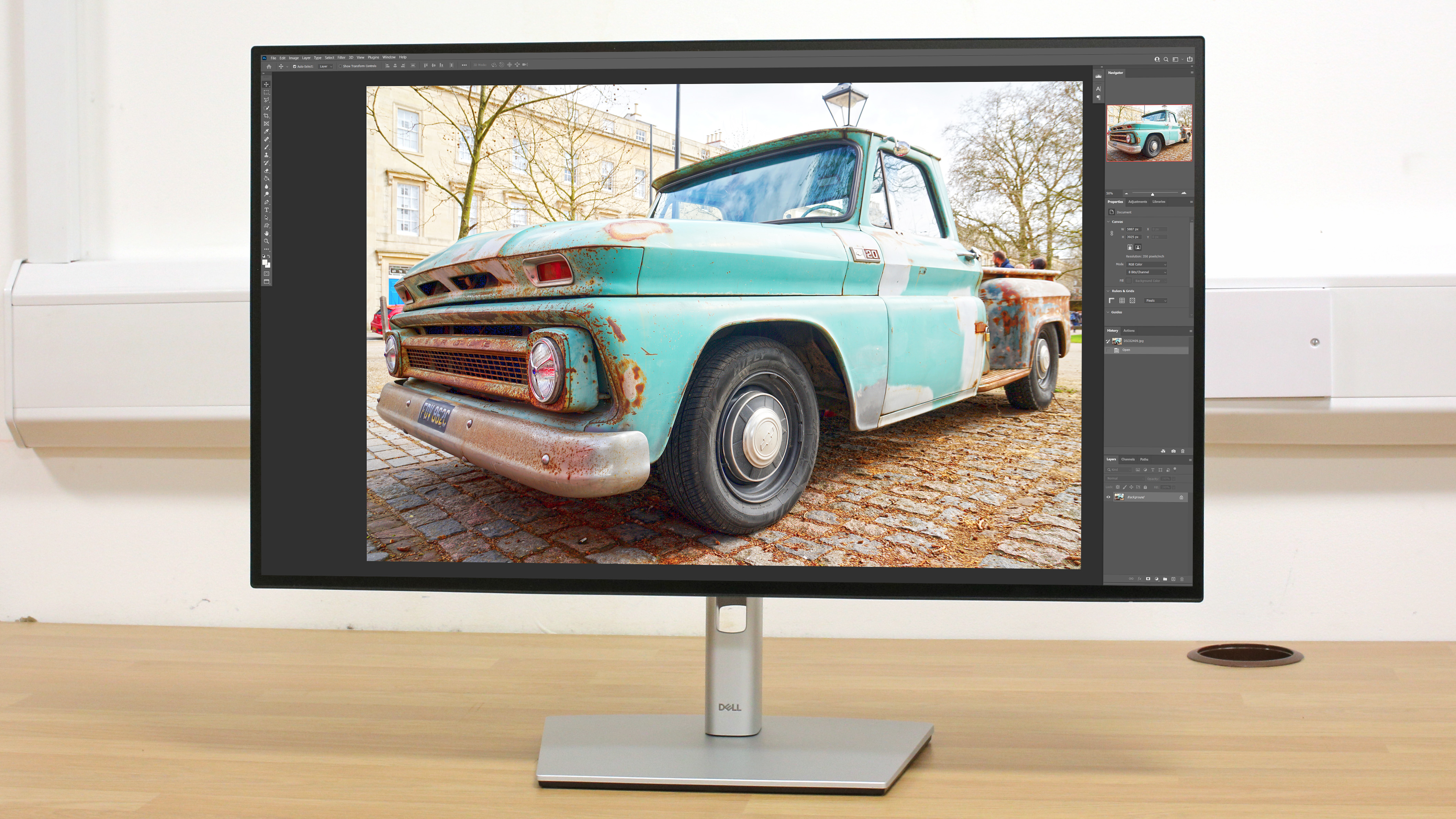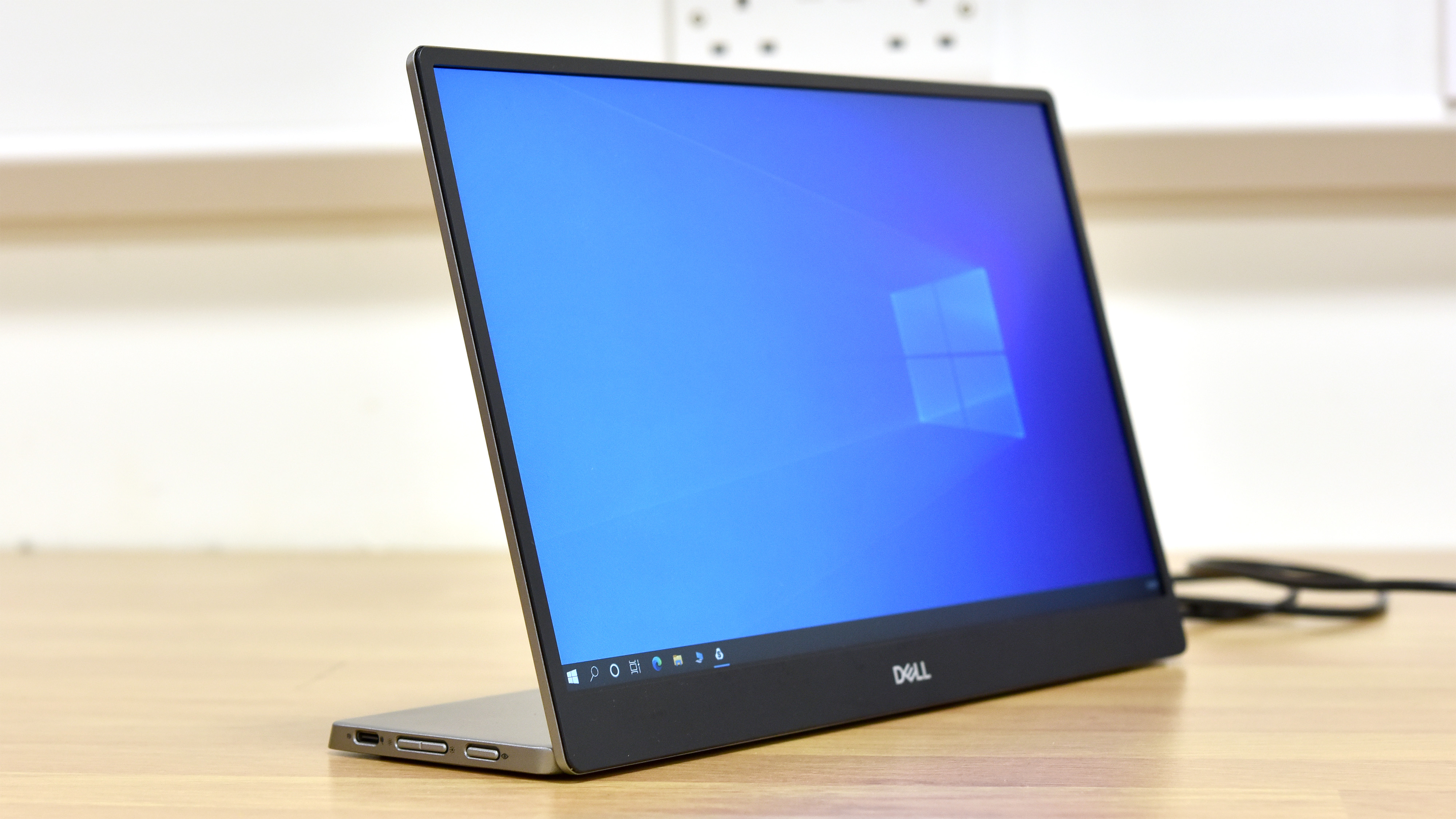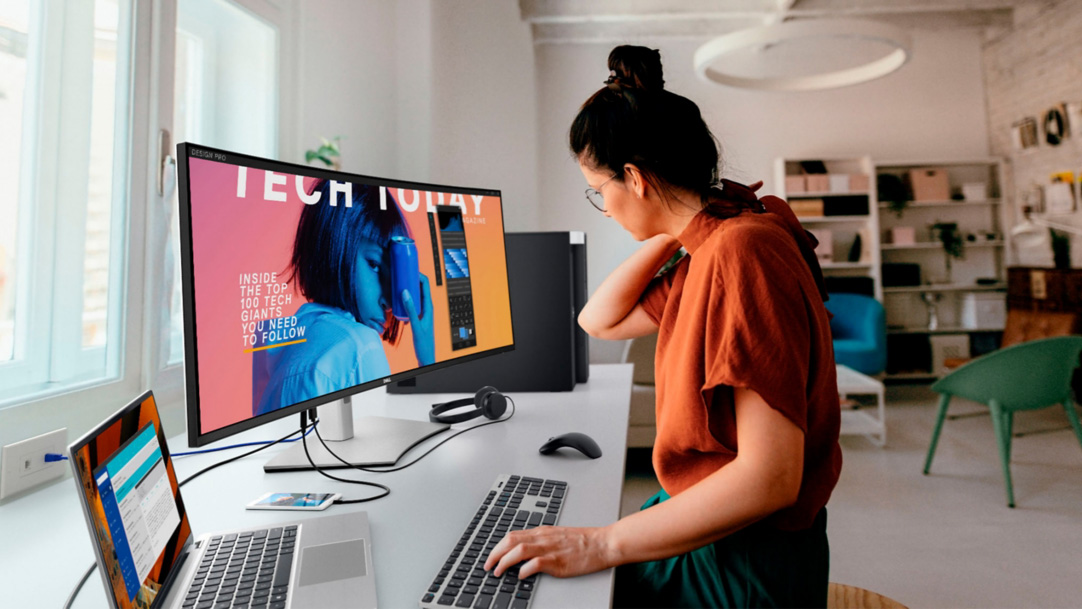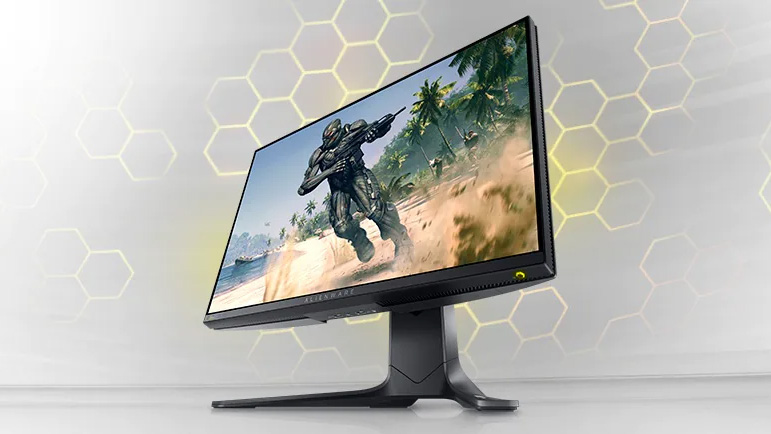Best Dell monitor: high quality screens for photography and video
These are the best Dell monitors for a range of uses, from photo editing and video editing to everyday productivity

Dell is a household name when it comes to computers and computer peripherals. Its flagship laptops, for example, have become the standard to which most Windows laptops aspire. The same can be said about its premium Alienware gaming laptops which boast plenty of power and a unique look.
Even though Dell’s monitors haven’t quite enjoyed a similar level of fanfare, you can trust that they’ll deliver the same level of quality in terms of design and performance. That’s especially true with the best Dell monitors in the line-up.
We’ve used quite a few of Dell’s displays for work and gaming, and we can attest to their solid build, sleek and appealing design, and great overall performance, which are all the right parameters when choosing an ideal monitor for you. However, there are a couple more reasons to go with Dell: variety and price.
Dell monitors pretty much cover a wide range of monitor types across all price points. That means that if you’re looking for an affordable, general-use monitor, you’ll find something from Dell. If you want a premium, over-$1,000 display with all the trimmings for your creative workloads, you’ll find a few options. If you want a gaming monitor, you’ll find several different offerings from both Dell and Alienware. Finally, if you want a particular 4K curved monitor that has a high contrast ratio and excellent color coverage but won’t burn a hole in your wallet, you’re likely to find that from Dell’s roster as well.
Whatever your daily needs are, whether you’re a student, a hardcore gamer, a content creator, or a cog that keeps the company wheel spinning, you’re likely to find the best Dell monitor for you that meets your expectations and is within your budget. To help you find it, we gathered the best of the best below.
Best Dell monitors
Why you can trust Digital Camera World

Specifications
Reasons to buy
Reasons to avoid
The U2723QE itself is a 27-inch display with headline specs like 98% DCI-P3 color space coverage, 4K resolution, USB-C connectivity with Power Delivery, and even IPS Black technology to boost contrast and give deeper black depth. In our testing we found Dell's headline specs translate to excellent image quality results across the board. If you need extensive DCI-P3 color space coverage and USB-C connectivity with Power Delivery, this display is certainly worth the money and is definitely worthy of serious consideration if you're in the market for a high-performing display for image or video editing.
Read more: Dell UltraSharp U2723QE full review

2. Dell 4K S3221QS
Specifications
Reasons to buy
Reasons to avoid
The first thing you’ll likely notice about the Dell 4K S3221QS is the elegant yet stylish design that makes it fit perfectly in an office but also look just as great in a creative space. But dig deeper, and you’ll realize that it has a lot more to offer. That 4K panel delivers gorgeous visuals, thanks to its 300-nit brightness, good color gamuts, and impressive 3000:1 contrast ratio. It’s a fantastic screen to work, watch, create and even play on, and it comes with excellent multitasking features to boot if you want to do a combination of those things at once. That’s without mentioning that smooth-like-heck 1800R curvature that keeps things immersive. The best part? It won’t set you back more than $500, making it accessible for just about everyone.

3. Dell Ultrasharp U3219Q
Specifications
Reasons to buy
Reasons to avoid
Dell might highlight its InfinityEdge and multitasking capabilities for business professionals, but the Dell Ultrasharp U3219Q is an excellent choice for creative pros as well. By that, we mean photographers, designers, and even broadcast video editors. There are a lot of features here for those users, including its 400-nit brightness, DeltaE ≦ 2 color accuracy, and 99% sRGB and 99% Rec. 709 color gamuts. It boasts 95% DCI-P3 as well if you’re exploring cinematic video editing. Those who weave together HDR videos will also appreciate its DisplayHDR 400 VESA certification. Finally, it comes with a USB-C port with Power Delivery and its KVM (Keyboard, Video and Mouse) switch built-in if you want a cleaner, minimalist setup.


Specifications
Reasons to buy
Reasons to avoid
Similar in size and thickness to a typical laptop screen, a portable monitor is designed to extend your laptop's screen area with minimal hassle. It can slide into a laptop backpack with ease and can be powered from your laptop via USB-C with Power Delivery.
The C1422H may be Dell's only portable monitor, but it is one of the best we've tested. You get a 14-inch, 16:9 widescreen display that sports a generous Full HD (1920 x 1080) resolution. That's high enough to produce a 158ppi pixel density on a screen this small - almost as crisp a 27-inch monitor running at 4K. The C1422H is based around an IPS LCD panel, which is ideal for discerning image or video editors: IPS LCD tech provides much more consistent color and contrast, regardless of viewing angle, than TN or even VA-based LCD units. It weighs only 590g and is also super-slim at just 1.43cm at its thickest. This is a monitor that can comfortably slot in a bag alongside your laptop, and Dell provides a nice soft sleeve for transportation.
See our full Dell C1422H review

5. Dell UltraSharp UP3218K
Specifications
Reasons to buy
Reasons to avoid
8K content is not all that common today, but there are 8K videos to be consumed out there, which means there are content creators making them. That’s where 8K monitors like the Dell UltraSharp UP3218K come in. With an over-$3,500 price tag, this isn’t exactly the kind of peripheral to splurge on to futureproof your setup – at least not yet. Only invest if its 7680 x 4320 resolution is something you can take full advantage of, and that’s likely only if you’re making 5K and 8K content. If you do get it, trust that you’re getting elevated picture quality, excellent color accuracy, and all the industry-standard color coverage you’ll ever need, including 100% AdobeRGB, 100% Rec. 709, and 98% DCI-P3.

6. Dell UltraSharp U4021QW
Specifications
Reasons to buy
Reasons to avoid
If it’s ultrawide you’re seeking, you can’t go wrong with the Dell UltraSharp U4021QW, whose exquisite picture quality, plethora of ports, and great set of features are only the beginning. That ultrawide format is, of course, the marquee feature here, and it’s even more impressive combined with the 2,500R curvature. But, there are other things creators can appreciate here. Its color coverage of 100% sRGB, 98% DCI-P3, and 100% Rec. 709 is what every photographer or video editor needs. As are its Thunderbolt 3 and RJ45 connectivity for fast data and power transfer as well as a robust and fast internet connection. Dig in deeper, and you’ll find a treasure trove of other features.

7. Alienware AW2521H
Specifications
Reasons to buy
Reasons to avoid
Alienware isn’t exactly a cheap brand, but this Dell subsidiary does have some mid-range options for gamers who want the best. When it comes to monitors, for example, we’ve got the Alienware AW2521H, which boasts impressive performance, a blazing fast refresh rate, and a sub-$700 price to boot. The 360Hz refresh rate is undoubtedly the marquee feature here, but others like Nvidia’s Reflex Latency Analyzer, which shows end-to-end response times in real-time, 1ms GtG response time, and DisplayHDR 400 should also help you play better and possibly even make it to the top of the leaderboard. This is a 1080p display, though, so it better suits gamers who need speed more than incredibly sharp visuals.

8. Dell UltraSharp U2720Q
Specifications
Reasons to buy
Reasons to avoid
The Dell UltraSharp U2720Q isn’t exactly a budget option, but it is a terrific (and affordable) mid-range option for the rest of us who want a 4K panel for everyday general or productivity use. This display has a few great features, including its wide 99% sRGB, 95% DCI-P3 and 99% Rec 709 color coverage, as well as 300 nits of brightness. It also has a decent selection of ports that include a USB-C one with 90W power delivery so you can hook up your laptop to expand your screen real estate and charge it simultaneously. And its ergonomic stand helps to ensure your viewing comfort.
What we look for in a monitor
• Screen size: You might think that the bigger the screen the better, but that's not quite the case. A big screen might be good for movies and gaming, where will typically sit back from the screen, but for editing and office work, a 24-inch screen is likely to be quite large enough, as there are more important factors to consider like resolution, color spaces and brightness. Screen size is measured in inches across the screen diagonal.
• Resolution: A higher resolution will make the pixels disappear so that the image is sharp, smooth and ultra clean-looking. A 4K screen will give terrific quality, but a 1920 x 1080 screen will still show visible dots. Resolution is measured in pixels as width x height.
• Aspect ratio: Most screens these days have a 16:9 ratio to suit common video and broadcast formats. You can get wider screens, typically for gaming. These can work fine for regular use too, though the extra width may mean you need to turn your head to see the edges. Many ultra-wide screens are curved for a more 'immersive' experience.
• Contrast: The better the screen, the higher the contrast ratio and the more rich and vivid the image on the screen. It's the ratio of the brightess value that can be displayed versus the darkest. A contrast ratio of 1000:1 or more is very good.
• Brightness: Brightness is measured in 'nits', and the higher the value the easier the screen will be to see in bright lighting.
• Color modes: All monitors match the sRBG color space more or less, which is a lowest-common-denominator default color space for both digital devices and cameras. Better monitors also support the Rec 709 standard closely, which is like an sRGB standard for video. The best monitors also support the DCI-P3 standard, which has a wider color gamut and is used for professional video editing, for example.
How we test monitors
We evaluate a monitor with particular attention given to its core image quality, including brightness, contrast, color vibrancy and accuracy. While this can - and will - be assessed by the experienced eye of our professional reviewer, some manufacturer screen specs can only be definitively judged by an 'electronic eye' - a monitor calibrator. Where possible, a calibration device will be placed on the screen to verify its advertised color space coverage, brightness output and consistency, and factory color calibration accuracy. Beyond image quality, we'll also scrutinise the monitor's display and data ports to ensure acceptable connectivity, and will give a thorough assessment of build quality, including the range of ergonomic adjustment in its stand. Only then will we determine if a screen is worthy of use by a discerning imaging or video enthusiast.
Read more
The best monitors for photo editing
The best monitors for video editing
Best monitors with webcams
The best ultrawide monitor
Best USB-C monitors for photo editing
Best keyboard for video editing
Everything photographers need to work from home
Best broadband deals in the UK
Best webcam for home working
How to edit videos: video editing tips
Best laptop stands
Get the Digital Camera World Newsletter
The best camera deals, reviews, product advice, and unmissable photography news, direct to your inbox!
Michelle is a writer and photographer based in Los Angeles, California. She regularly writes for Fodor's Travel, Steve's Digicams, Thrillist and Techlicious, and is currently a freelance SEO and Production Editor for TechRadar.

